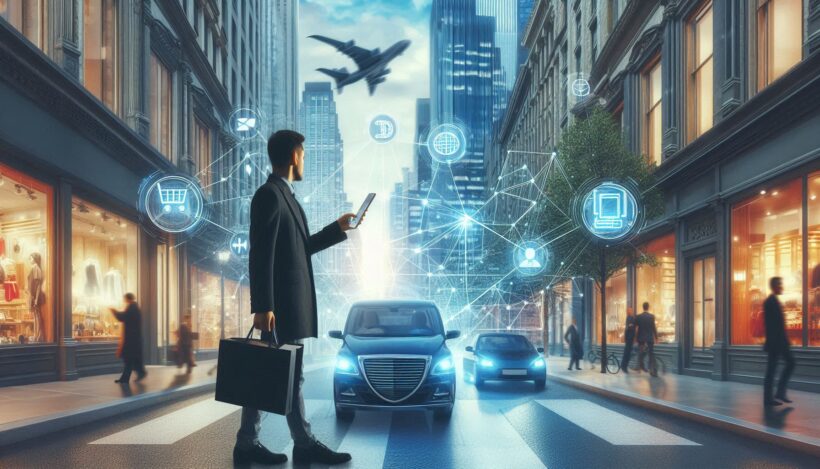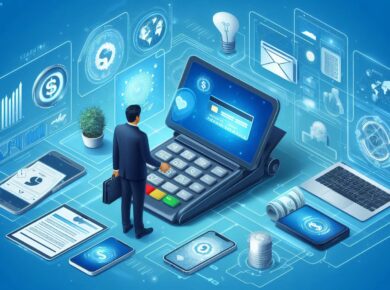Table of Contents
As retail continues to evolve, blending online and offline channels has become essential for businesses that want to stay competitive. This integration, known as “omnichannel” commerce, enhances the customer experience by combining the best of both worlds—digital convenience and physical interactions. From innovations in inventory management to personalized shopping, let’s explore how the future of retail is being shaped by the seamless integration of online and offline commerce.
1. Omnichannel Shopping Experience
1.1 Bridging Digital and In-Store Experiences
Consumers today expect a unified shopping journey. Omnichannel strategies allow customers to shop online, pick up in-store, or buy in-store and have items shipped directly to their homes. This approach provides flexibility and ensures that customers have a seamless experience no matter where they shop, reducing friction and increasing satisfaction.
1.2 Meeting Customers Wherever They Are
With omnichannel commerce, retailers can meet customers across multiple touchpoints, including websites, social media, mobile apps, and physical stores. A shopper can start browsing online, receive personalized ads on social media, and complete their purchase in-store. By creating consistent brand experiences across platforms, retailers are deepening their connection with consumers and fostering brand loyalty.
2. Technology-Driven In-Store Experiences
2.1 Interactive Displays and Digital Kiosks
Many retailers are leveraging technology in physical locations with interactive displays and digital kiosks. These allow customers to browse product options, check sizes, and read reviews while in-store. This added layer of digital information enhances the shopping experience and guides purchasing decisions, blending online ease with in-store immediacy.
2.2 QR Codes for Product Information
QR codes are becoming a popular tool for retailers, allowing shoppers to scan products in-store to access detailed information, reviews, and pricing options. This feature empowers customers with the digital insight they are accustomed to while shopping in person, bridging the gap between online and offline commerce.
3. Personalization and Data-Driven Insights
3.1 Personalized Marketing and Product Recommendations
Retailers are using data from both online and offline interactions to deliver a personalized shopping experience. Customer preferences, shopping habits, and purchase histories are analyzed to create customized marketing campaigns and product recommendations. Whether online or in-store, shoppers can see product suggestions based on their unique tastes, enhancing satisfaction and increasing conversions.
3.2 Smart Inventory Management
Data-driven insights help retailers manage inventory more effectively. With an integrated system, they can track popular items and adjust stock levels based on demand. This also allows for features like “endless aisle” shopping, where customers in-store can order out-of-stock items directly from an online inventory, ensuring they get what they need even if it’s not physically available on-site.
4. Augmented Reality (AR) and Virtual Reality (VR)
4.1 Virtual Try-Ons and Fitting Rooms
Augmented reality (AR) allows customers to try on products virtually, enhancing online shopping with a feature typically limited to physical stores. From clothing and makeup to furniture, AR helps shoppers visualize products in real life. Many stores now offer virtual fitting rooms, giving customers the chance to see how items might look before making a purchase.
4.2 Creating Immersive In-Store Experiences
In-store, retailers are beginning to utilize virtual reality (VR) to create immersive shopping experiences. VR can transport customers to different settings, offer virtual product demonstrations, or even allow them to interact with digital versions of products. This technology not only enhances the shopping experience but also encourages longer store visits and higher engagement.
5. Click-and-Collect and Curbside Pickup
5.1 Convenience of Online Ordering with Immediate Pickup
Click-and-collect and curbside pickup options gained popularity during the pandemic and remain a preferred choice for many shoppers. Customers can purchase items online and conveniently pick them up at their local store, blending the best of e-commerce convenience with the immediacy of in-store shopping. This service reduces wait times and enhances the customer experience by meeting consumer demand for flexible pickup options.
5.2 Reducing Last-Mile Delivery Costs
For retailers, click-and-collect also reduces last-mile delivery costs and logistical challenges. It’s a win-win for both retailers and customers: consumers get their items faster without delivery fees, and retailers can streamline their operations, keeping costs down and customers happy.
6. Mobile Integration and Digital Payments
6.1 Mobile Wallets and Contactless Payments
As mobile wallet adoption grows, consumers are opting for contactless payment options in stores. Mobile payment systems like Apple Pay, Google Wallet, and digital cards simplify transactions, allowing customers to shop with minimal hassle. Retailers integrating digital payment options provide an efficient, touch-free checkout process, reducing wait times and enhancing in-store convenience.
6.2 In-App Shopping and Loyalty Programs
Many brands are creating mobile apps that combine e-commerce, loyalty rewards, and in-store browsing capabilities. Shoppers can use these apps to check in-store availability, earn rewards, and access exclusive offers. By combining these features, retailers encourage repeat purchases and give customers more reasons to stay engaged with their brand.
7. Sustainability and Ethical Practices
7.1 Transparency in Sourcing and Shipping
With consumers becoming more conscious of sustainability, retailers are integrating ethical and eco-friendly practices in both online and offline channels. This includes using sustainable packaging, offering transparent supply chains, and prioritizing ethical sourcing. Retailers who are committed to sustainability are gaining favor with customers, as these practices resonate with the values of modern consumers.
7.2 Online Returns Made Easy
A challenge of online shopping is returning items, often a time-consuming and costly process. Many retailers are now offering options to return items in-store, even if they were purchased online. This practice not only reduces shipping waste but also provides customers with a hassle-free return experience, promoting sustainability and improving customer satisfaction.
Conclusion
The future of retail is centered on a seamless integration of online and offline channels, creating an experience that’s efficient, engaging, and personalized. By adopting an omnichannel approach, retailers are ensuring they can meet consumer expectations in both digital and physical spaces.
As technology continues to advance, retail will continue to blend the boundaries between online and offline, creating a cohesive shopping journey that adapts to the preferences and needs of modern consumers. Businesses that embrace this integration are well-positioned to thrive in a retail landscape where convenience, personalization, and engagement are paramount.






